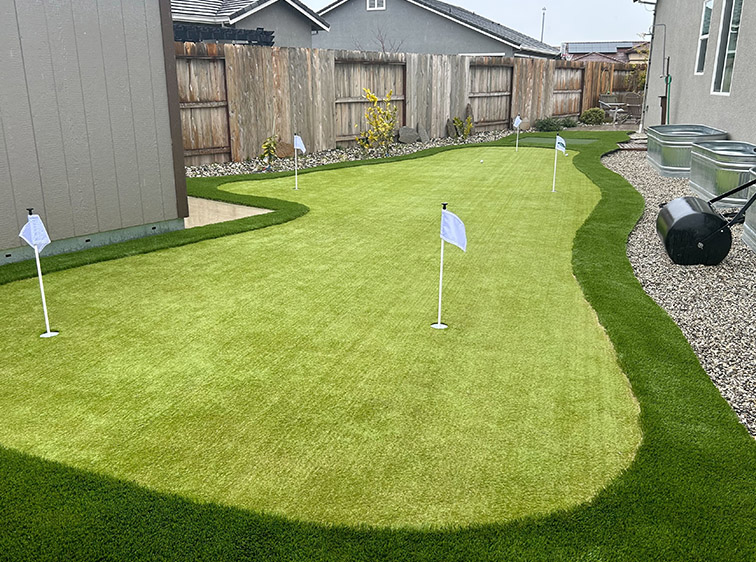
Golfers know that having consistency in their short game is key to improving their overall scores. To hone that skill, practice putting on a uniform, predictable surface often isn’t enough. Enter the world of imperfectly perfect putting greens.
When a golfer can effectively read and navigate the inconsistent surfaces, slopes, and textures that replicate real golf course conditions, they’re better equipped to handle the challenges that come their way during an actual round.
Let’s delve into the importance of practicing on inconsistent terrain and how using artificial grass for putting greens in Phoenix can help you create a perfectly imperfect practice space in your Phoenix backyard.
Why Practice Golf on Inconsistent Terrain?
When you’re on the golf course, every hole presents a unique set of challenges, which may range from varying slopes and breaks to different grass textures and growth patterns.
If you only practice on a uniform putting surface, these inconsistencies can catch you by surprise and damage your confidence as well as your score. By introducing imperfect conditions into your practice routine, you prepare more effectively for real-world golf course scenarios, which ultimately helps to improve your handicap and overall stroke-play performance.
Benefits of Artificial Grass Putting Greens
When you opt for artificial grass putting greens, you get to enjoy the following benefits:
- Aesthetic appeal: High-quality artificial grass mimics lush green grass that stays green year-round, eliminating the need for watering and mowing, two common problems Phoenix residents face.
- Durability: Synthetic turf stands up to the Phoenix sun and is engineered to handle heavy foot traffic, a boon for busy golf trainers and avid sports enthusiasts.
- Customization: Creating imperfect, realistic putting green conditions is easy with artificial grass because you have complete control over the terrain’s shape, slope, and surface texture.
- Low maintenance: Artificial grass putting greens in Phoenix require minimal upkeep compared to natural grass. This frees up your time to focus on honing your putting skills rather than tending to your green’s maintenance requirements.
Emulating Imperfect Golf Course Conditions with Artificial Grass
To create the ultimate imperfectly perfect practice putting green in your Phoenix backyard, consider incorporating the following factors:
1. Varying Slopes and Breaks
Recreating realistic undulations and contours on your putting green is crucial for simulating different scenarios that you might encounter on a real golf course.
Vary the slopes and breaks by shaping the ground contours beneath the turf during installation. You can also use bunker-style edge designs to mimic sand traps and define the area between green and other landscape features.
2. Varied Surface Textures
Integrate different types of artificial grass to simulate a variety of textures, such as tight, smooth-rolling surfaces and longer, shaggier fringe grass. This helps you to practice short chip shots from various grass heights and lengths around the green.
3. Obstacles and Hazards
Introduce realistic hazards to your artificial grass putting greens in Phoenix, such as sand traps, water features, and artificial rocks. These challenges not only add aesthetic appeal but also require you to strategize and adjust your golfing approach during practice sessions.
4. Adjustable Stimp Meters
A stimp meter measures how far a ball rolls on a putting green. Golf courses often have different stimp meter readings due to the grass length and rolling speed.
By using different types of turf or adjusting the sand infill, you can create a variety of stimp meter readings in your Phoenix backyard, allowing you to practice putting on surfaces with different rolling speeds.
Creating an imperfectly perfect artificial grass putting green in your Phoenix backyard expands your golf practice options, ensuring that your short game is versatile, resilient, and ready for any challenge on the golf course.
